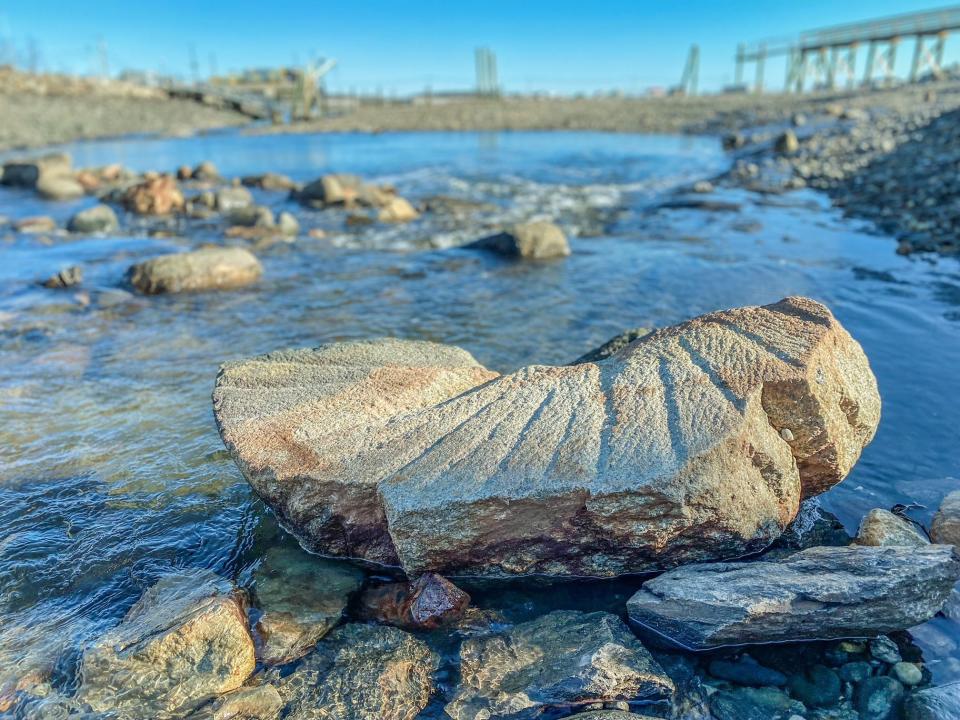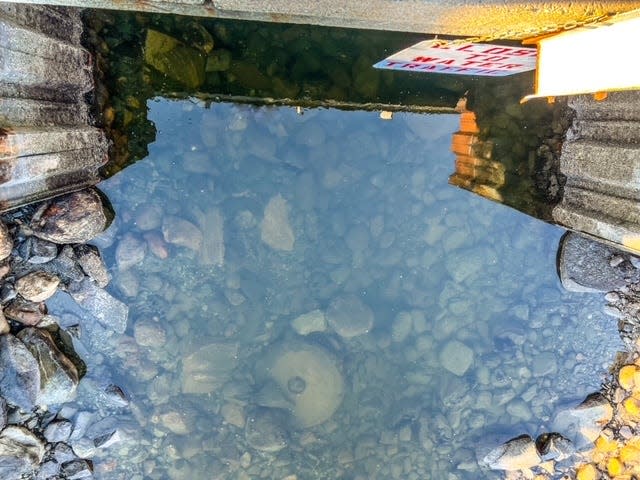18th century discovery? Here's what storm uncovered in Rye Harbor
RYE — A slice of the town’s colonial history has been discovered in the aftermath of the coastal storms and flooding that inflicted damage in January.
Two millstones believed to be from the Goss family farm’s 18th century tidal grist mill were located in a shallow creek at Rye Harbor during post-storm inspection, according to Town Administrator Matthew Scruton. Grist mills, where grains were ground up, were abundant in colonial America.
The millstones were located near the Harbor Road bridge by Rye’s public works director, Jason Rucker.

“Rye once was home to multiple mills, and it is an important part of our history. Just imagine the countless bushels of grain these millstones have ground, feeding both families and livestock as the community grew,” Scruton said in a prepared statement. “The discovery reminds us of the many farmers that once toiled on the land to produce the grain and the millers who once guided these heavy millstones.”
Life-saving adventure: Portsmouth hiker saved on Mt. Washington
Members of the town’s Select Board and the Conservation Commission have been notified of Rucker’s findings. The town will look to partner with the New Hampshire Department of Environmental Services and a contractor to have the millstones safely removed from the creek so they can be publicly displayed.
“Everyone is enthusiastic in their support of trying to save these millstones for their historical value to the town,” Scruton said.
Town historian Alex Herlihy feels strongly the stones were used in the Goss mill.
“The Goss Farm was a tidal mill, and those millstones are clearly from that tidal mill, where they were found at that bridge they’re repairing,” he said.
Information compiled by Craig Musselman for the Rye Historical Society notes there were several colonial mills in town, including the Goss’ tidal mill in the harbor. Other tidal mills were stationed at Seavey’s Creek at Odiorne Point, Parsons Creek and Locke’s Pasture, according to Musselman’s research.

The Goss farm and house were built in the 1790s on land Nathan Goss purchased from the Locke family, and the barn is still standing on Harbor Road, per the Rye Historical Society. The Goss family’s tidal mill operated in Rye Harbor near where the bridge is located today.
Descendents of the Goss family decided to sell the acreage and the farm to the town, which purchased the property with the help of a U.S. Department of Agriculture grant. The land is now held in conservation through the Rockingham County Conservation District.
The discovery of the millstones is one of the few positives to arise from the consecutive storms that struck in January, bringing lasting flooding, high winds and damages across the Seacoast to public infrastructure, businesses and private property.
“The roots of history run deep in Rye. Last year, Rye celebrated that it had been 400 years since the first European settlement here in 1623,” Scruton said. “With such a rich history it is common to find reminders of our past, but the discovery of two historic millstones in a tidal creek is unique and serves as a reminder that history is everywhere, just waiting to be uncovered.”

On Tuesday, members of the New Hampshire Division of Homeland Security and Emergency Management and the Federal Emergency Management Agency are slated to meet with local officials in Hampton and Rye to discuss potential funding to address damage caused by the storms.
This article originally appeared on Portsmouth Herald: Historic millstones uncovered in Rye Harbor NH due to storms

